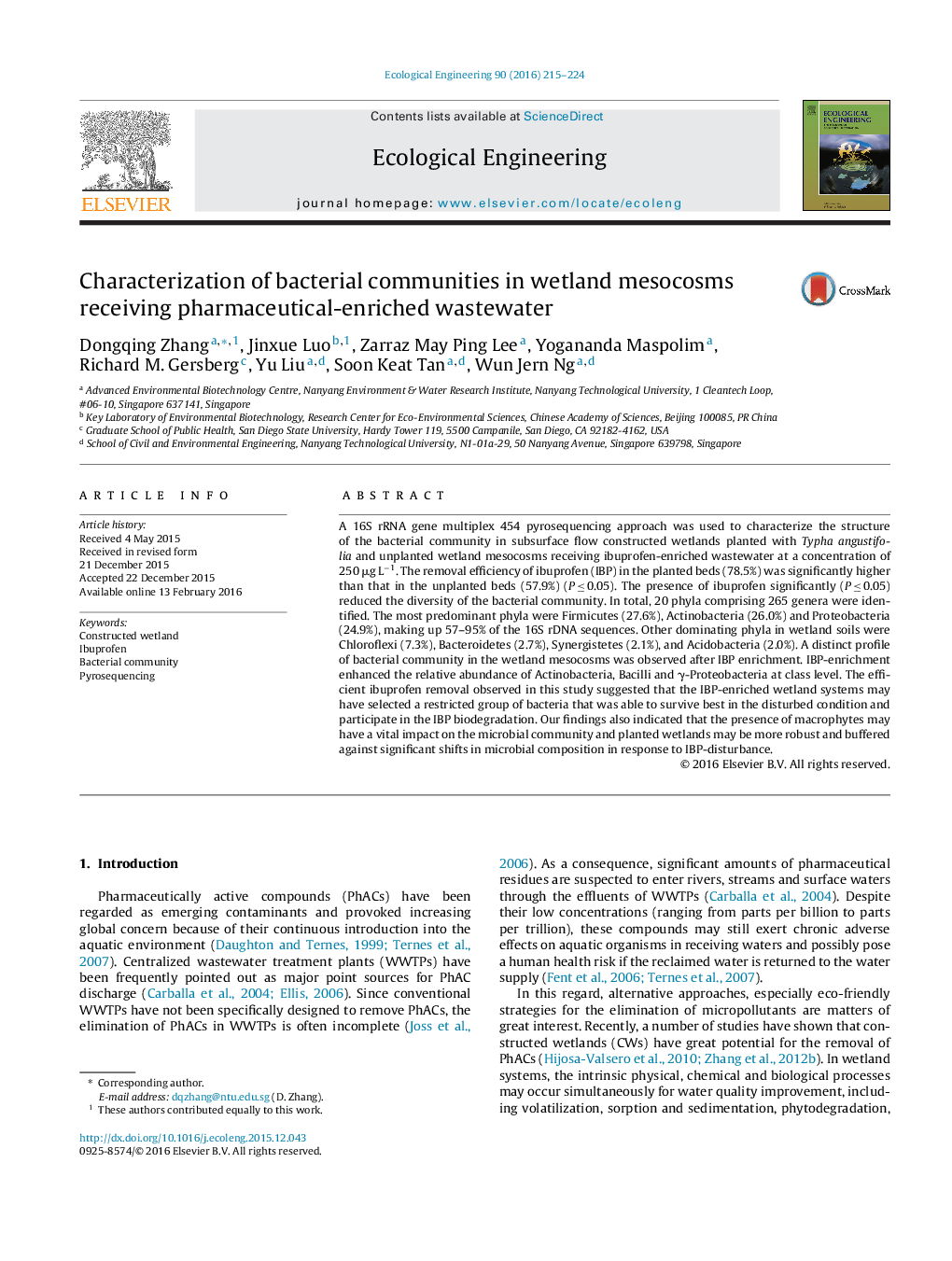| Article ID | Journal | Published Year | Pages | File Type |
|---|---|---|---|---|
| 4388664 | Ecological Engineering | 2016 | 10 Pages |
•The planted wetland mesocosms outperformed unplanted controls in IBP removal.•IPB enrichment reduced overall diversity of bacterial community.•The most predominant bacteria were phyla Firmicutes, Actinobacteria and Proteobacteria.•A distinct profile of bacterial community was observed after IBP enrichment.•The presence of macrophytes may have a vital impact on the microbial community.
A 16S rRNA gene multiplex 454 pyrosequencing approach was used to characterize the structure of the bacterial community in subsurface flow constructed wetlands planted with Typha angustifolia and unplanted wetland mesocosms receiving ibuprofen-enriched wastewater at a concentration of 250 μg L−1. The removal efficiency of ibuprofen (IBP) in the planted beds (78.5%) was significantly higher than that in the unplanted beds (57.9%) (P ≤ 0.05). The presence of ibuprofen significantly (P ≤ 0.05) reduced the diversity of the bacterial community. In total, 20 phyla comprising 265 genera were identified. The most predominant phyla were Firmicutes (27.6%), Actinobacteria (26.0%) and Proteobacteria (24.9%), making up 57–95% of the 16S rDNA sequences. Other dominating phyla in wetland soils were Chloroflexi (7.3%), Bacteroidetes (2.7%), Synergistetes (2.1%), and Acidobacteria (2.0%). A distinct profile of bacterial community in the wetland mesocosms was observed after IBP enrichment. IBP-enrichment enhanced the relative abundance of Actinobacteria, Bacilli and γ-Proteobacteria at class level. The efficient ibuprofen removal observed in this study suggested that the IBP-enriched wetland systems may have selected a restricted group of bacteria that was able to survive best in the disturbed condition and participate in the IBP biodegradation. Our findings also indicated that the presence of macrophytes may have a vital impact on the microbial community and planted wetlands may be more robust and buffered against significant shifts in microbial composition in response to IBP-disturbance.
